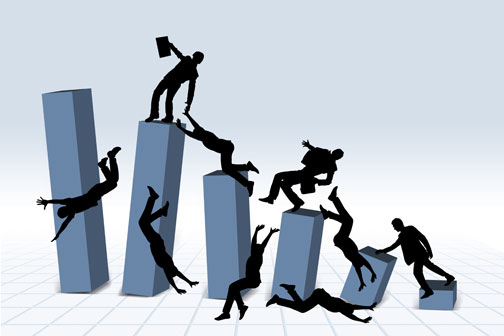“Jerry, shut down that TV and go do your homework! Do you want to end up ‘failing’ your exams this school term?” a mother yells at her teenage son in a way that many can relate with.
No one wants to fail; from our childhood, we are constantly reminded to not fail, shown all the perils that come with failure, booed by others when we miss our targets and maybe even get beaten for failing school work. We grow up with a phobia for failure, doing everything in our power to not fail, and this usually translates into some form of rigidity and one-sidedness. Failure is a blow to human self-esteem and, truth be told, it can be a terrible thing, but so can cheap success. While we strive to not fail, we would do well to realize that there could be some gains from failing every now and then.
As we already know, the world we live in undergoes fundamental changes every now and then, and disruption is becoming the new normal while long term stability is merely the exception. The playing field gets leveled, unleveled and re-leveled faster than the earth revolves around the sun every year, and the end result is a super-fast changing world where innovation becomes commodity within months. In this fast-paced world of ours, the role of failure is changing.
If innovation is the objective, failure is an important stepping stone. Failure is an essential part of the creative process; as a matter of fact, the frequency and intensity of failures could serve as a measure of how well one is doing. We need to start seeing failure differently, because it is becoming an inevitable experience in today’s world.
Understand that failure is actually feedback, an indication that certain processes were faulty or inefficiently executed, meaning desired outcomes can be harvested if those processes are remedied. So, the thing to do when, not if, failure comes is to understand why, isolate the root causes and prepare to take the next step in a more intelligent fashion. This philosophy is called “Intelligent Fast Failure” and is crafted from Albert Einstein’s quote; “Genius is making all possible mistakes in the shortest amount of time.”
According to Professor Jeanne Liedtka of the University of Virginia, the most fundamental law of innovation is that the only certainty is uncertainty, and this is really the cornerstone of what has become the physics of innovation. The pursuit of innovation is different from the pursuit of predictability which births stable environments where outcomes are long known before they materialize. The pursuit of innovation is inherently messy and inefficient, and everyone who engages in this pursuit must learn to tolerate ambiguity and uncertainty.
“Venture Capitalists understand this physics of innovation – only 1 or 2 of every 10 investments end up a winner, yet they don’t see themselves as failures because they understand that the force at play is uncertainty. So, they see themselves as managers of a portfolio of innovation, most of which won’t do well. They also know that their ability to predict, at the early stages, which will do well is also poor,” says Professor Jeanne Liedtka.
“They understand that the inability to predict is a result of the uncertainty surrounding any new business, so they develop a set of practices that acknowledges this reality – they bet heavily on individual leaders of new businesses, looking for people with experience and expecting both failures and successes. They try and keep their bets small and affordable until they have better data. Finally, they develop approaches that helps them get in and out of new businesses intelligently and swiftly. Their goal is to succeed or fail fast and cheap,” she adds.
Her words are a succinct representation of the new understanding we all must have about failure in order to make sense of the 21st century. While one shouldn’t deliberately set-up to fail, the risks can be minimized and made bearable by ensuring that failure is made cheap, both personally and financially. A way of achieving this is to engage an iterative approach and ensure all hypotheses and assumptions are tested at every junction, and this is quite resonant with the lean startup concept.
For instance, if, as an entrepreneur, you have a great idea of a new product that “everyone will love” because of the value it creates, understand, first and foremost, that the only person who thinks your idea is a great idea is you. So, you must find a way to test whatever assumptions you have made in the areas of value creation, execution, scalability and defensibility before committing significant resources to mass production.
Lean startup experts advocate that a prototype be developed first and given to prospective customers, then feedback is immediately acquired from them after they use it. Within this feedback will usually lie tremendous and invaluable insight that can make your product or service better if incorporated into the overall design. At this point, if the product would be rejected by the market, you would know upfront before committing more resources to mass production, this means you failed in a cheap way.
This feedback is really the gold of product development, and this is why software makers release a beta version that is tested by users before the final version is made commercially available. Feedback is the precursor to success and this philosophy holds true in politics, business development, startup economics and everything that has to do with innovation in today’s world.
The role of failure has changed, it no longer means you’ve been condemned but is, rather, an indication that a thing or more should be fine-tuned somewhere. It is helpful to embrace such feedback whenever they come our way and tweak our approach accordingly, keeping in mind that we can minimize the attendant risks by making sure failure is cheap.
Start small, fail fast and hit the road again – this is how the game is now played!
By Emmanuel Iruobe








